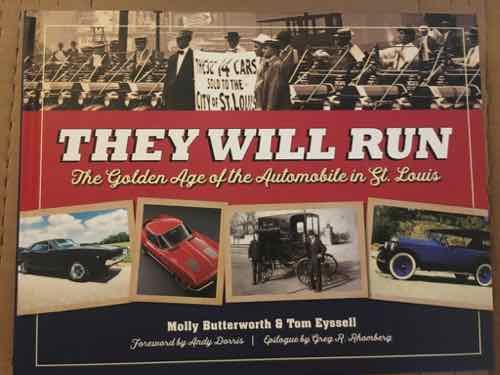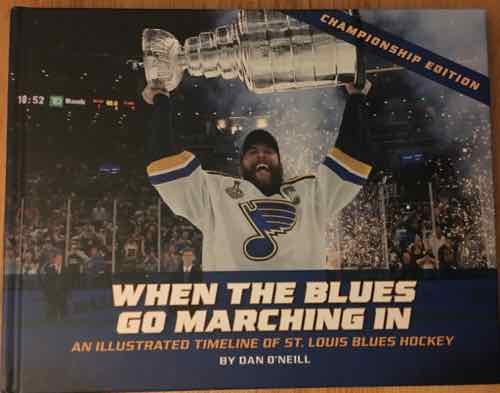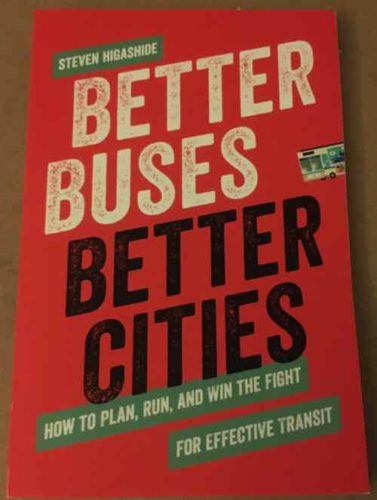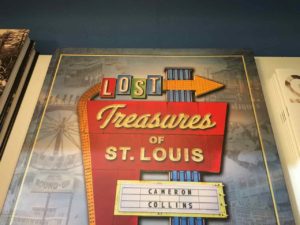New Book — ‘They Will Run: The Golden Age of the Automobile in St. Louis’ by Molly Butterworth and Tom Eyssell
 Despite thinking the St. Louis region has been destroyed for the automobile, I’m also a car buff. For good or bad, the car had a big influence on the 20th century and St. Louis.
Despite thinking the St. Louis region has been destroyed for the automobile, I’m also a car buff. For good or bad, the car had a big influence on the 20th century and St. Louis.
A new book looks at the auto manufacturers that called St. Louis home, the dealerships, and everything else to do with cars in St. Louis. (I may need to write the book on how Harland Bartholomew destroyed the city to accommodate the car.)
Anyway, ‘They Will Run: The Golden Age of the Automobile in St. Louis’ is a photo-filled history of the car in St. Louis from early manufacturers, to dealership rows like Locust & Kingshighway, Corvette assembly at Union & Natural Bridge, etc.
From the local publisher:
Were it not for a few quirks of history, St. Louis might have become the center of the American automotive industry instead of Detroit. Since the late 1800s, St. Louis has been home to dozens of automobile makes and to numerous manufacturers, large and small. In They Will Run: The Golden Age of the Automobile in St. Louis, head down the road of automotive history in the Gateway City, where transportation has always meant power.
Many St. Louisans have heard of the famous Moon automobile of the early twentieth century, but what about the Dyke, the Dorris, and the Gardner? Learn about the city’s prominence as a key automobile manufacturing hub through the 1960s, and the role played by notorious St. Louis playboy and bon vivant Harry Turner in bringing the automobile to St. Louis.
Do you know which vehicles produced here helped the Allies win World War II? Or which ones helped carry and sell beer, create the legend of America’s first true sports car, or were raced around ovals and across the country? Dig down under the roads to uncover the previous lives of streets that once served as Automobile Rows lined with beautiful buildings in which to buy or repair cars.
Authors and car enthusiasts Molly Butterworth and Tom Eyssell deftly take the wheel of this in-depth guide to the automotive heritage of St. Louis. Sit back and enjoy the ride, from the horseless carriage, through the halcyon 1920s, and up to the everchanging automobile industry of today. (Reedy Press)
I’ve thoroughly enjoyed flipping through the pages of this book.
Here are three upcoming events, all free, where you can hear from the authors.
- Book Presentation and Signing
Tuesday, October 29 from 6:30 to 7:30 p.m.
Webster Groves Public Library
301 E. Lockwood Ave.
Webster Groves, MO 63119
(314) 961.3784
Free and open to the public - Book Presentation and Signing
Tuesday, November 12 from 7 to 10 p.m.
Alpha Brewing
4310 Fyler Avenue
St. Louis, MO 63116
(314) 621-2337
Free and open to the public - Book Presentation and Signing
Monday, November 18 from 7 to 8 p.m.
St. Charles City-County Library – Library Express WingHaven
7435 Village Center Drive
O’Fallon, MO 63368-4768
(636) 561-3385
Free and open to the public. Please register here.
A fascinating book packed with St. Louis history.
— Steve Patterson


 Upon receiving the email about this new book I immediately responded, “Yes, I’m interested.” Of course, European cities are very different from sprawling American metropolises. Still, I think there’s value in David Sim’s analysis of the approach we need to take.
Upon receiving the email about this new book I immediately responded, “Yes, I’m interested.” Of course, European cities are very different from sprawling American metropolises. Still, I think there’s value in David Sim’s analysis of the approach we need to take.
